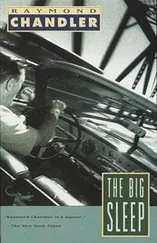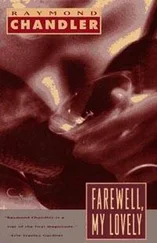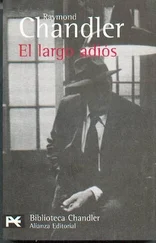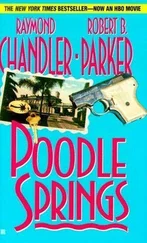For all its creative license, then, what seems powerful and true about the scene is that it captures a certain critical energy very much embedded in everyday life, and it does so in an environment not obviously distinguished for its cultural richness or sensitivity: the Jersey Shore. (Think of Snooki and Pauly D from the wildly popular reality television show of that title that ran from 2009 to 2012.) Yet people in the most ordinary circumstances do have arguments like this about works they care about, and the works that Dante and Randal care about are the three films in the first Star Wars trilogy. It matters some that these films were actually not so recent in 1994, having appeared between 1977 and 1983. In the lifetimes of Dante and Randal, presumably young men in their early twenties, this is no small gap in time. Randal says he has just seen Jedi again today, presumably on the VHS player in the video store. It is of course precisely the institution of video rental that provides a new “library” function for ordinary cinephiles in this period, making it possible for Randal to rescreen a film from more than a decade earlier so as to get to the bottom of a critical instinct he has about it. Dante and Randal stand at the start of an era of expanding resources that continues into the present moment, as relatively affordable film streaming services offer ready access to thousands and thousands of film and video materials.
In Clerks , conversations like the one between Dante and Randal not only reveal what they care about, as evident in the detailed references they exchange and readily recognize; such conversations also enact a kind of caring. They represent a kind of meaning making even in a cultural zone like a 1980s working-class Jersey strip mall, where such forms of care and meaning making may not be easy to come by. Judgments of the sorts they concur in here—and arguments on behalf of those judgments such as they exchange here—come to carry a certain moral weight. There is, potentially, some irony in the scene, some gentle mockery of the pedantry of the analytic commentary Dante elicits from Randal. Smith takes care to set up the scene so that the actor playing Randal, Jeff Anderson, can actually read his complicated critical analysis from an off-screen script board. But the irony is, I suggest, enabling rather than undercutting: without making these interlocutors sound vaguely academic it would be harder to make the scene work.
Then again, it might also be tempting to view this exchange, and to dismiss the film, as merely an event in American consumer culture. What makes such a dismissal awkward in this case is that the film so pointedly stages this discussion—stages itself, really—in the immediate context of American consumer culture. Like much dialogue in the film, this conversation takes place with Dante behind the counter of the convenience store, in front of a wall that is chockablock with everyday things to buy—especially products containing addictive substances like nicotine, caffeine, and sugar. And these addictive products have their role in the way that the scene plays out. For example, while the conversation with Randal is progressing, a man steps over from the coffee maker to announce himself an “independent contractor” and to volunteer an opinion about Randal’s reading of Jedi . Moreover, toward the end of the scene, Dante and Randal are so caught up in their critical discourse that they fail to notice that their friend Jay—who spends his days hanging out in front of the store with his sidekick Silent Bob (played by Kevin Smith himself)—is stuffing his mouth with Hostess Twinkies (the notoriously sugary American junk food) (Figure 1.4). Variations on the psychology of consumption are played out through several figures over the course of the film, such as the “milk lady,” always sorting through the convenience store cooler in search of the freshest gallon, and the “egg man,” who rearranges eggs there in hopes, as Dante philosophically observes, of making the perfect dozen. In these ways and by these means, Smith’s film carves out a place for a poetics of cinema in the most implausible of circumstances.

FIGURE 1.4 Jay (Jason Mewes) sneaking a Twinkie in Clerks .
The course of this analysis has returned us to the poetry of the refrigerator with which we began. Set against the background of such scenes of consumption, Dante and Randal’s critical discussion of George Lucas’ trilogy takes on a distinctive cast. If the milk man and the egg lady go beyond the sheer impulsive gluttony of Jay’s gorging on Twinkies to something like an exaggerated form of selectivity, Dante and Randal go beyond selectivity (“which movie did you like better?”) to a developed and articulated response. In so doing, one might say, they develop their own articulate responsiveness. Articulate responsiveness may be understood, paradoxically, as both a goal and a condition of doing criticism well. And herein lies an important if somewhat circular principle for the arguments and analysis involved in doing criticism: Criticism develops responsiveness to works that reward it, and it does so by the practice of responding to them articulately . These issues will be addressed further in Chapter 2, which looks at the mutually connected role of questions and judgments in criticism.
1.5 Criticism between Page and Screen
I have juxtaposed a trio of canonical American poems with a cult film that perhaps a small fraction of my readers may have seen. Such a gesture ought to prompt a question: What kinds of works are relevant to doing criticism in the sense I have been developing here? My brief in this book will cover the literary arts, the dramatic arts, and the narrative screen arts. As it happens, these inclusions and exclusions also conform to the standard institutional arrangements of higher education, at least in the UK, North America, and the rest of Anglophone world. For in literature departments like the ones we call “English,” not only are drama and theater often taught alongside poetry and fiction but so are film and other screen arts. English departments, of course, have been a home for film studies in many institutions for many years, even at places that have a separate program or department for, say, cinema and media studies. It is fair to say that the study of screen narrative is increasingly incorporated under separate institutional auspices, and under various rubrics: Film Studies; Cinema Studies; Screen Arts; Theater, Film, and Drama; Film and Television; Media Studies; and so on. It is also fair to say, however, that over the course of a decades-long pursuit of disciplinary autonomy, a certain tendency has arisen among scholars in the CMS fields to push away from any strong connection with literary criticism. It has become almost a rite of passage for these disciplines. 42
Conversely, literary criticism has had its own issues with film studies, not least because of the position taken by the most important voice in establishing the academic terms of that discipline in the post-cinema era, I. A. Richards. Richards’ founding of his program for practical criticism in academia on a deeply inimical conceptualization of poetry and cinema has had far-reaching consequences for how study of the humanities has developed in the modern university. It was so far-reaching at Cambridge, indeed, that even a force like Raymond Williams, the most important British Marxist critic of his era, long had difficulty in overcoming it there. Williams’ early, forgotten championing of cinema studies, like his later and more familiar championing of drama studies, were both carried out on behalf of a challenge to Cambridge English as Richards helped to establish it, a critique of that program as a “theorization of reading” rather than a “theorization of composition.” Film, like drama, offered objects to criticism and theory that demanded attention to issues of “composition,” which in turn, presumably, had implications for the study of poetry. Working on such objects, as he put it, posed a challenge for practical criticism as it had been increasingly naturalized at Cambridge (and elsewhere), because when working on drama—as with cinema—one is “inevitably brought up against problems of form in the most direct way.” That is, one is made to address “basic problems of stance and mode which were never really posed at all” within the more narrowly literary confines of the Richards program. 43
Читать дальше













